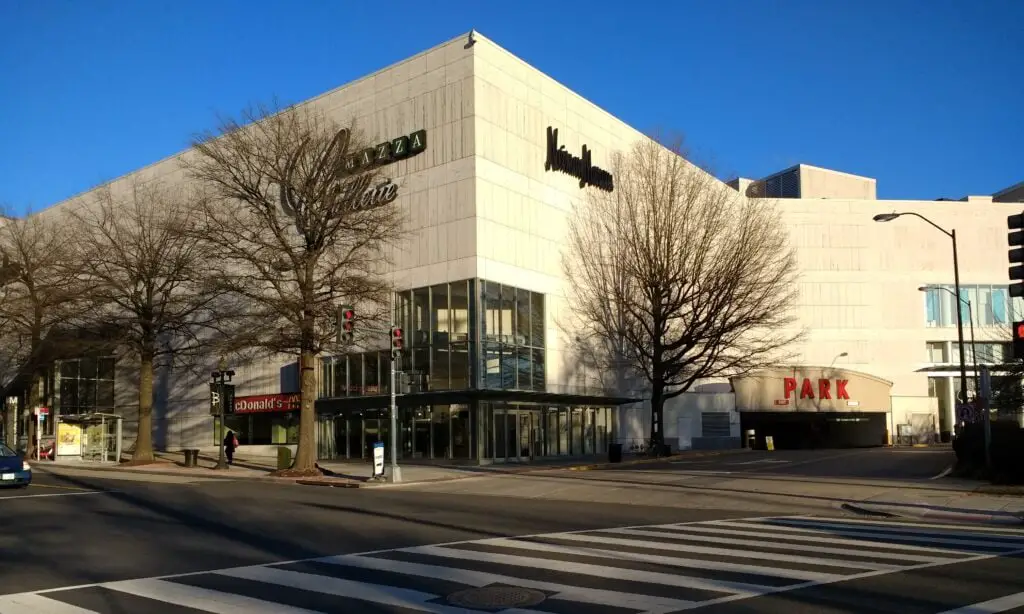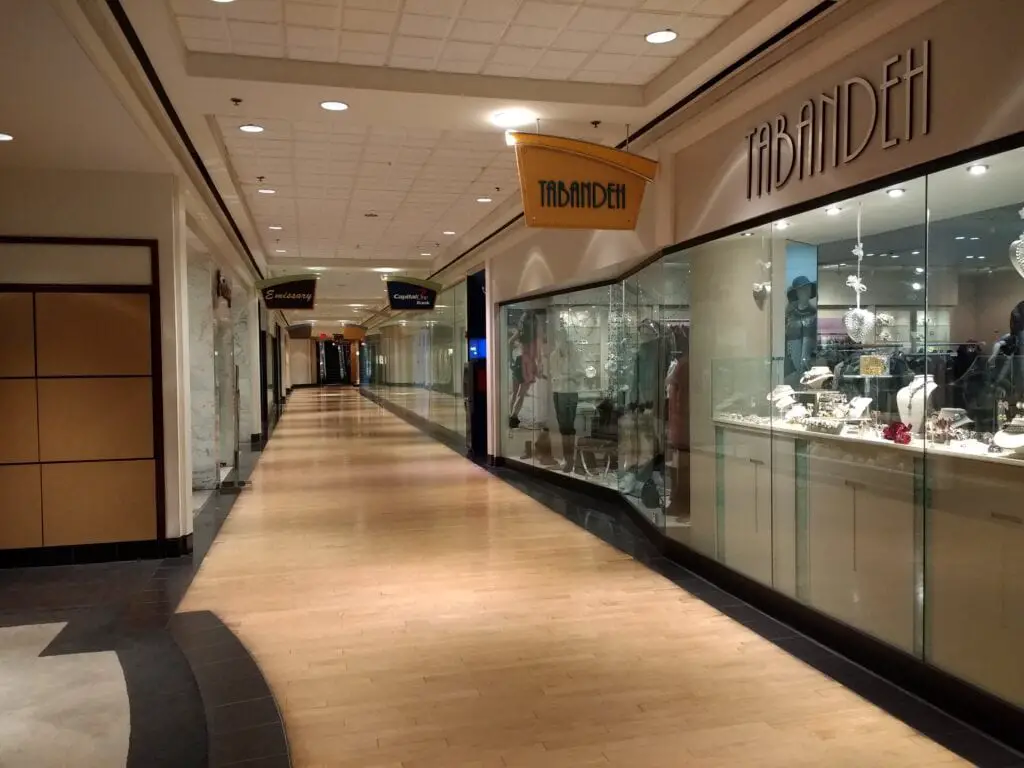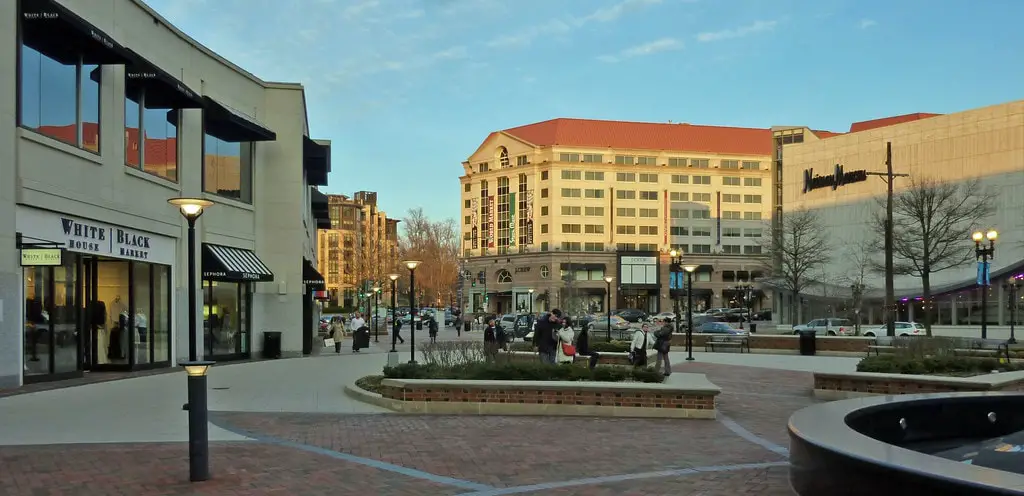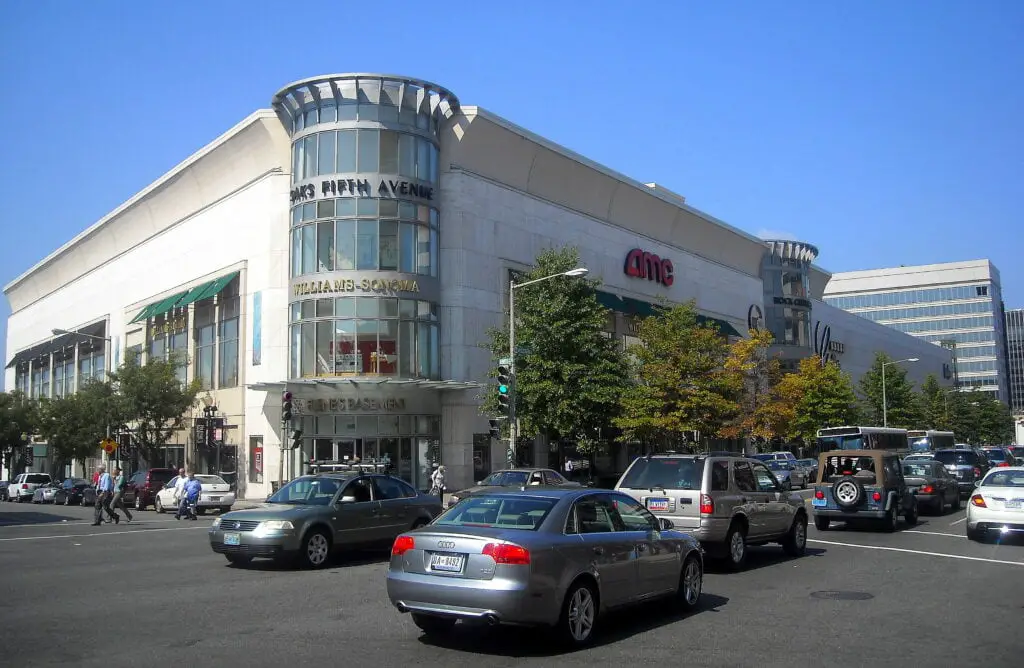The Dawn of Mazza Gallerie Mall
Mazza Gallerie Mall once stood as a beacon of retail luxury in Washington, D.C., nestled in the Friendship Heights neighborhood.
Its strategic location at Western Avenue and Wisconsin Avenue intersection, straddling the Maryland-D.C. line, made it a magnet for shoppers from both states.
Established in 1977, the mall was a testament to the city's growth and development. It was more than just a shopping center; it was a symbol of the city's economic prosperity and a testament to the evolving consumer culture of the time.
The Golden Era: Stores, Cinema, and Community
The mall was home to various upscale stores, including Neiman Marcus, Saks Fifth Avenue, and Tiffany & Co. These stores were not just retail outlets; they were destinations, offering a shopping experience that was both luxurious and personal.
The mall also housed a seven-screen movie theater, a rarity. This made it a popular entertainment destination, attracting movie-goers from across the city and beyond.
The theater was more than just a place to watch films; it was a social hub where people could gather, interact, and enjoy shared experiences.
Over the years, the mall witnessed several significant events and milestones. One such milestone was opening the first Amazon Books store in the D.C. area in 2016. This important event marked the intersection of traditional retail and digital commerce.

Architectural Marvel: Design and Structure
The original design of Mazza Gallerie was a reflection of the architectural trends of the late 70s. The mall's structure, characterized by its large, spacious interiors and glass-fronted stores, was designed to create a luxurious shopping experience.
The mall's architecture was about aesthetics and creating a welcoming and comfortable space. The spacious interiors, the wide corridors, the carefully planned store layouts - all these elements were designed to make shopping a pleasurable experience.
Over the years, the mall underwent several renovations to keep up with changing trends and consumer preferences. These renovations were not just about updating the look and feel of the mall; they were about adapting to the changing needs and expectations of the shoppers.

Economic Impact: More Than Just a Mall
Mazza Gallerie played a significant role in the local economy. It was not just a place for shopping; it was a place that created jobs, supported local businesses, and contributed to the economic growth of the city.
The mall's presence also significantly impacted the real estate market in Friendship Heights. Properties in the vicinity often commanded higher prices due to their proximity to the shopping center. This was a testament to the mall's economic influence and role in shaping the local economy.
Community Hub: Events, Gatherings, and Partnerships
Beyond its economic impact, Mazza Gallerie was a social hub for the Friendship Heights community. The mall was not just a place for shopping; it was a place where the community could unite.

The mall hosted various community events and gatherings, from holiday celebrations to charity fundraisers. These events were about entertainment and bringing the community together, fostering a sense of belonging and unity.
The mall also partnered with local organizations to support community initiatives. These partnerships were a testament to the mall's commitment to the community and its role as a key community stakeholder.
A New Chapter: Redevelopment and Transformation
In recent years, the mall faced challenges due to changing consumer behaviors and the rise of online shopping. These challenges were not unique to Mazza Gallerie; they were indicative of the broader changes in the retail landscape.

These challenges led to redeveloping the mall into a mixed-use development. The redevelopment plan, led by developer Tishman Speyer, aims to transform the former mall into a residential development with new ground-floor retail spaces.
The Future: A New Vision for Mazza Gallerie
The redevelopment project, expected to be completed in 2025, will feature a 7-story, 325-unit apartment with four levels of below-grade parking.
The new development will also include 20,000 square feet of ground-floor retail along Wisconsin Avenue, focusing on boutique stores and a mix of fast-casual and full-service food offerings. TJ Maxx, a long-time mall tenant, will remain on-site and anchor the mall's 70,000-square-foot retail concourse.

Conclusion: A Legacy and a Promise
The story of Mazza Gallerie is a story of change and transformation. It is a story of a mall once a bustling shopping center, a hub of economic activity, and a social gathering place.
It is a story of a mall transformed into a modern mixed-use development, promising a new era of growth and prosperity.
As we look forward to the future of Mazza Gallerie, we also look back with nostalgia at its past. We remember the mall not just as a place for shopping but as a place that created memories, shared experiences, and brought the community together.
